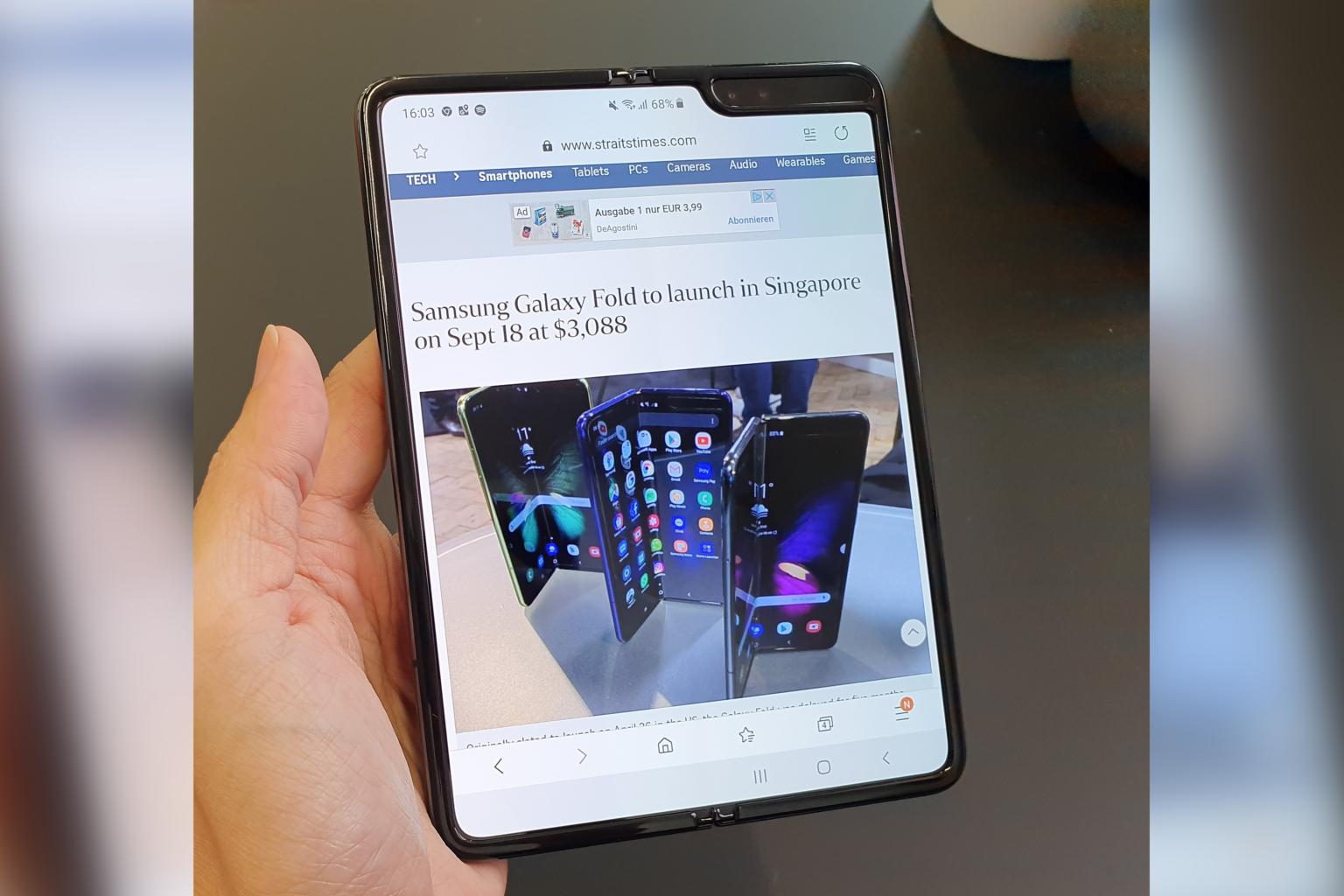Hands-on with the redesigned Samsung Galaxy Fold
Sign up now: Get ST's newsletters delivered to your inbox

Samsung said it has fixed the design issues that delayed the original Galaxy Fold, but the biggest stumbling block could be its $3,088 price tag.
ST PHOTO: VINCENT CHANG
Vincent Chang
Follow topic:
It has been a rocky start for the Galaxy Fold. Samsung had to cancel the original April launch for its foldable smartphone after reviewers broke it in the little time they spent with it.
A five-month delay followed as Samsung fixed the issues. Last week, the South Korean firm announced that the Fold would go on sale in selected markets including Singapore. The 4G version of the smartphone will go on sale here from Sep 18 at $3,088.
I got to try the revamped Fold at the IFA trade show. There were no watchful handlers around me this time, unlike my previous experience with the original Fold earlier in February at the Mobile World Congress trade show. A sign of Samsung's confidence, perhaps?
During an hour-long hands-on session, Samsung highlighted three major changes to the Fold's design to tackle the issues and improve the user experience.
First, there are now protective plastic caps at the top and bottom of the hinge area, plugging gaps that - on the original version - had allowed small particles inside the device, resulting in damaged screens. Second, the edges of the screen's protective cover, which was peeled off by some reviewers to disastrous effect, is now concealed under the slightly-raised borders around the screen, making it impossible for users to remove by accident. Finally, Samsung has reduced the gap between the two screens when folded, which improves the look and feel of the device.
The hinge has a springy feel that unfolds the screen without much effort. Magnets are used to hold the two screens in place while folded.

The front of the phone is tall and narrow, with a 4.6-inch cover display more suited for simple tasks such as checking notifications and replying to calls and messages. If an app, such as Google Maps, is currently open in this cover display, the app segues to display a larger version with more information, when the Fold is opened - like a book - to reveal its 7.3-inch Oled screen.
This primary display is almost squarish and offers ample space for apps like videos and games. Web pages, though, may not use the extra screen real estate efficiently. Depending on how the Web page was optimised for different screen sizes, there might be some wasted white space.
While I could see the seam running down the middle where the fold is, it is easy to ignore. What I could not ignore is the cut-out for the dual selfie camera system (comprising a 10MP camera and a 8MP depth camera) at the top right corner, which bothered me because it made the screen asymmetrical.
Interestingly, the cover display and the foldable display are regarded as separate Home screens, which means you can place different app shortcuts in each screen.
Up to three app windows can be placed on the display in split-screen view. This is great for certain tasks, such as when I am searching for a restaurant. For instance, I would open Google Maps for directions, while checking for online reviews using a browser. The third app could be a messaging client to inform friends about the restaurant.
Apps can also be opened in pop-up view, which creates a windowed version that can be resized and moved around on the display. You can have more than three apps in this case.
While the Fold's larger screen does offer more possibilities, its design feels inelegant to me, simply because this design required an extra cover display and extra cameras (it has six) in order for the Fold to perform like a typical smartphone.

